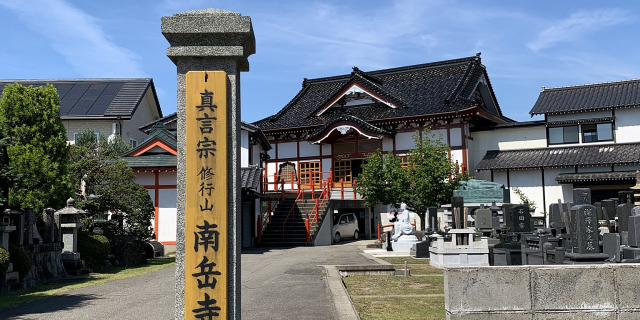毛越寺
( Mōtsū-ji )Mōtsū-ji (毛越寺) is a Buddhist temple of the Tendai sect in the town of Hiraizumi in southern Iwate Prefecture, Japan, and also refers to the historic area surrounding it containing the ruins of two older temples, Enryū-ji (圓隆寺) and Kashō-ji (嘉祥寺) in a Jōdo (Pure Land) garden. The current temple was built in the 18th century and bears no relation to the ancient temple structures that once stood here. In June 2011, Mōtsū-ji was listed as a UNESCO World Heritage Site as "Historic Monuments and Sites of Hiraizumi".
Mōtsū-ji was founded in 850 by Ennin (Jikaku Daishi). At the time, the area was a frontier between Yamato Japan and the Emishi of the Tōhoku region of northern Honshū.
In the mid-12th century, Fujiwara no Motohira, the second Northern Fujiwara lord, built a temple here called Enryū-ji. There is also a possibility that Motohira's father Fujiwara no Kiyohira built an earlier Enryū-ji on this site before he died in 1128. If so, it is supposed that this original temple was consumed by fire soon after its completion in the war of succession between Motohira and his brother Koretsune. The temple built by Motohira around 1150 would then have been a copy of his father's temple.
Motohira's Enryū-ji must have been spectacular by any standards. The main hall contained a monumental statue of Yakushi Nyōrai, the Buddha of Healing, with monumental statues of the Twelve Divine Generals (Jūni Shinshō), sculpted by Unkei with crystal eyes; an innovation at that time. The hall itself was brightly painted and decorated with precious wood, gold, silver and jewels. The main hall was surrounded by other buildings including a lecture hall, a circumambulation hall, a two-story main gate, a bell tower and a sutra repository. The temple's name placard was written by Fujiwara no Tadamichi (藤原忠通) and the ornamental poem slips by Fujiwara no Norinaga.
At the height of its glory Mōtsū-ji is said to have had 40 buildings and up to 500 subsidiary chapels for meditation, many of which used rare woods and precious materials in their construction, in the manner of nearby Chūson-ji.
Once Enryū-ji was completed Motohira ordered an almost exact copy to be built beside it, Kashō-ji. He did not live to see it completed. His son and heir, Hidehira, accomplished that task. Kashō-ji also contained a monumental statue of Yakushi Nyōrai but the walls were decorated with paintings illustrating the Lotus Sutra.
After the downfall of the Northern Fujiwara clan, all of the buildings were destroyed by fires, either natural or in conflicts, and the temple was completely in ruins by 1226.[1]































Add new comment